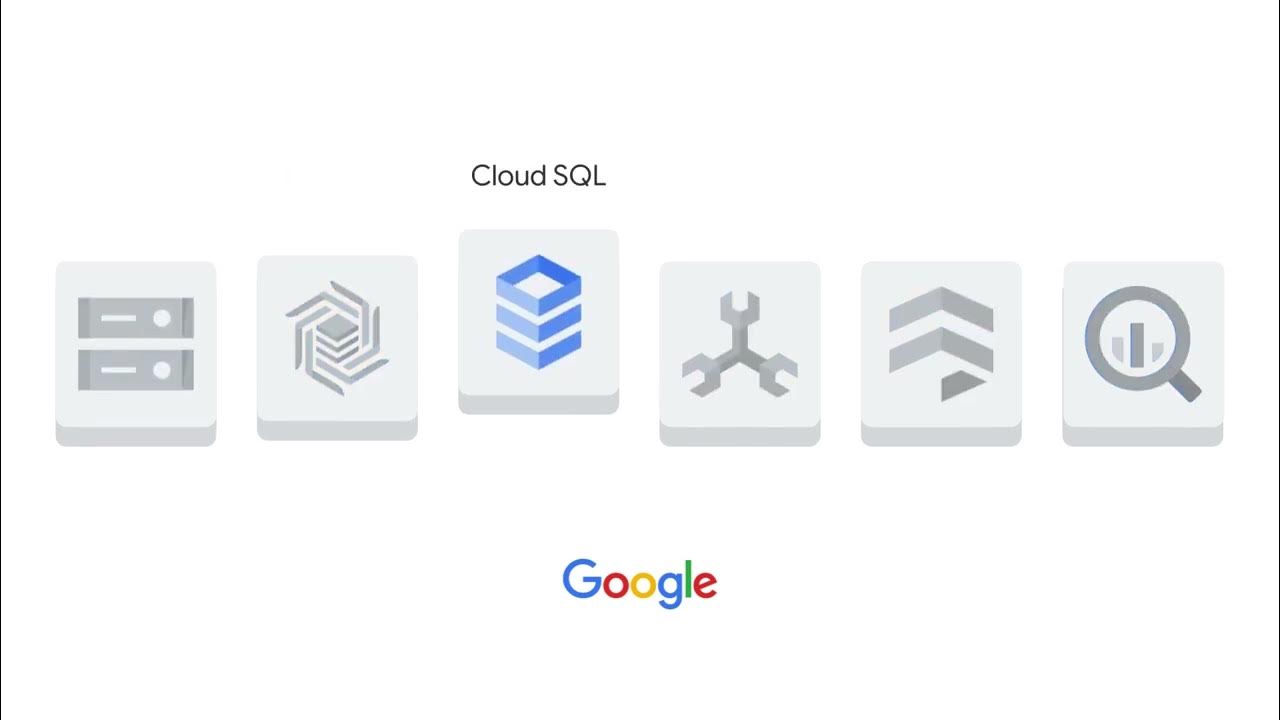Introduction
Summary
TLDRIn Module 4 of the Google Cloud Computing Foundations course, you'll explore various storage and database options within Google Cloud. The module covers both structured and unstructured storage, emphasizing Cloud Storage for unstructured data. You'll learn about SQL managed services, Cloud SQL for MySQL, and perform hands-on labs to connect and manage databases. The course also delves into NoSQL solutions like Firestore and Bigtable. By the end of the module, you'll have a comprehensive understanding of Google Cloud's storage and database offerings, capped off with a quiz and summary of the key topics.
Takeaways
- 😀 Explore different storage options available in Google Cloud.
- 😀 Understand the difference between structured and unstructured storage in the cloud.
- 😀 Learn how to use Cloud Storage for unstructured data storage.
- 😀 Examine the use case for relational storage versus NoSQL storage in the cloud.
- 😀 Discover options available for relational and NoSQL storage in Google Cloud.
- 😀 Learn how to leverage Cloud Storage in a hands-on lab experience.
- 😀 Understand the use case for SQL managed services in Google Cloud.
- 😀 Gain hands-on experience by creating and connecting to a Cloud SQL for MySQL instance.
- 😀 Explore and perform basic SQL operations using the Google Cloud console and MySQL client.
- 😀 Learn how to use Spanner and other NoSQL options in Google Cloud, such as Firestore and Bigtable.
Q & A
What is the main focus of Module 4 in the Google Cloud Computing Foundations course?
-Module 4 focuses on understanding the storage and database options available in Google Cloud. It covers topics like structured and unstructured storage, Cloud Storage, Cloud SQL, NoSQL options, and services like Firestore and Bigtable.
What will learners explore in this module regarding data storage options in Google Cloud?
-Learners will explore different storage options in Google Cloud, including how to differentiate between structured and unstructured storage and the various services available for each.
What is the main difference between structured and unstructured storage in the cloud?
-Structured storage involves data that is highly organized and easily searchable, typically in relational databases. Unstructured storage, on the other hand, refers to data that doesn't have a predefined format, such as multimedia files, logs, or documents.
How will Cloud Storage be used in this module?
-Cloud Storage will be used to store unstructured data. The module includes a hands-on lab to explore a range of activities applicable to using Cloud Storage.
What are the use cases for relational versus NoSQL storage options in Google Cloud?
-Relational storage is typically used when data is highly structured and needs ACID (Atomicity, Consistency, Isolation, Durability) properties, while NoSQL storage is suitable for more flexible, scalable solutions, particularly for large volumes of unstructured data.
What is Cloud SQL and how is it relevant to the course?
-Cloud SQL is a fully managed relational database service for MySQL, PostgreSQL, and SQL Server in Google Cloud. In this module, learners will create and connect to a Cloud SQL for MySQL instance and perform basic SQL operations.
What will be covered in the lab related to Cloud SQL?
-The Cloud SQL lab will guide learners through creating and connecting to a Cloud SQL for MySQL instance, and performing basic SQL operations using the Google Cloud console and the mysql client.
What is Google Cloud Spanner, and why is it mentioned in this module?
-Google Cloud Spanner is a horizontally scalable, strongly consistent relational database service. It is mentioned in the module as part of exploring NoSQL options and understanding how to scale relational databases in the cloud.
What role does Firestore play in Google Cloud storage options?
-Firestore is a fully managed, scalable, and serverless document database that is part of Google Cloud's NoSQL offerings. It is designed for real-time applications and offers easy scalability and high availability.
What is Bigtable, and how is it used in Google Cloud?
-Bigtable is a NoSQL database service designed for large-scale, low-latency applications. It is ideal for managing huge amounts of data and is covered in the module to help learners understand its use cases in cloud-based systems.
Outlines

Cette section est réservée aux utilisateurs payants. Améliorez votre compte pour accéder à cette section.
Améliorer maintenantMindmap

Cette section est réservée aux utilisateurs payants. Améliorez votre compte pour accéder à cette section.
Améliorer maintenantKeywords

Cette section est réservée aux utilisateurs payants. Améliorez votre compte pour accéder à cette section.
Améliorer maintenantHighlights

Cette section est réservée aux utilisateurs payants. Améliorez votre compte pour accéder à cette section.
Améliorer maintenantTranscripts

Cette section est réservée aux utilisateurs payants. Améliorez votre compte pour accéder à cette section.
Améliorer maintenant5.0 / 5 (0 votes)






